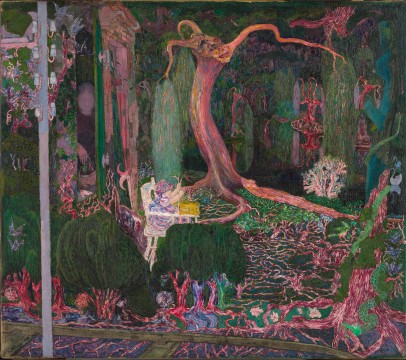‘Landscape with Girl Skipping Rope’ by Salvador Dalí takes a central place in the Evil room. The triptych with the girl skipping rope in a desert symbolises possibly a happy childhood memory, but the evil lurks in the ear-shattering silence. ‘Christ on the cross’ by Eugène Delacroix is placed next to the altarpiece. In this moving sketch of a Crucifixion, Delacroix combines a composition of Rubens with the light of Rembrandt. Delacroix particularly admired Christ on the Cross, a painting that he went to study in Antwerp twice in his life. One of the public’s favourites in Rotterdam, ‘The Mandrill’ by Oskar Kokoschka, forms a contrast in a series of portraits of distinguished citizens from the seventeenth century. With wild brush strokes and bright colours, Kokoschka captures the wild character of a mandrill, just like the painter an isolated being.
‘Evening Landscape with Timber Wagon’ by Peter Paul Rubens could not be excluded from the loan. Rubens’ evening landscape is a fine addition to the exceptional, but primarily religious works by the master in the KMSKA collection. The poetry of the charming landscape announces Romanticism. Rubens’ world view is in sharp contrast to the depictions of untamed and threatening nature in the same room.
Bill Viola’s video of the ‘Man of Sorrows’ is confronted with portrayals of Christ by Albert Bouts and James Ensor. And the eighth work, ‘The new generation’ by Jan Toorop, is given a place next to the symbolic work ‘The fall of the rebel angels’ (1889) by his good friend James Ensor. Toorop and Ensor shared an interest for unreal subjects in a style which, as it were, took leave of realism.










